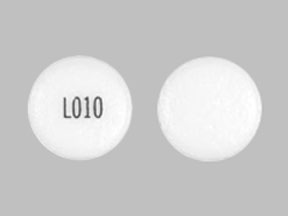
Tramadol ER Coupons & Savings Card – Discount Prices from $24.18
My prescription
Edit
100MG, Tramadol ER (30 Tablet Extended Release 24 Hours)
Select pharmacy

CVS
$24.18
COUPON PRICE
Walgreens
$32.25
COUPON PRICE
Albertsons
$42.98
COUPON PRICE
Walmart
$56.71
COUPON PRICETramadol ER savings card
Show this card to your pharmacist
CVS
$24.18
BIN
ID
PCN
GRP
019876
LHB90A3BD4
CHIPPO
LHX
Powered by
More prescriptions for pain
More prescriptions for pain
Tramadol ER dosage forms
Dosage Quantity Price from Per unit 100MG 30 Tablet Extended Release 24 Hours $24.18 $0.81 100MG 7 Tablet Extended Release 24 Hours $18.03 $2.58 100MG 28 Tablet Extended Release 24 Hours $23.77 $0.85 100MG 60 Tablet Extended Release 24 Hours $30.36 $0.51 100MG 90 Tablet Extended Release 24 Hours $44.54 $0.49 200MG 15 Tablet Extended Release 24 Hours $25.29 $1.69 200MG 28 Tablet Extended Release 24 Hours $31.61 $1.13 200MG 30 Tablet Extended Release 24 Hours $32.58 $1.09 200MG 60 Tablet Extended Release 24 Hours $47.16 $0.79 200MG 90 Tablet Extended Release 24 Hours $69.74 $0.78
| Dosage | Quantity | Price from | Per unit |
|---|---|---|---|
| 100MG | 30 Tablet Extended Release 24 Hours | $24.18 | $0.81 |
| 100MG | 7 Tablet Extended Release 24 Hours | $18.03 | $2.58 |
| 100MG | 28 Tablet Extended Release 24 Hours | $23.77 | $0.85 |
| 100MG | 60 Tablet Extended Release 24 Hours | $30.36 | $0.51 |
| 100MG | 90 Tablet Extended Release 24 Hours | $44.54 | $0.49 |
| 200MG | 15 Tablet Extended Release 24 Hours | $25.29 | $1.69 |
| 200MG | 28 Tablet Extended Release 24 Hours | $31.61 | $1.13 |
| 200MG | 30 Tablet Extended Release 24 Hours | $32.58 | $1.09 |
| 200MG | 60 Tablet Extended Release 24 Hours | $47.16 | $0.79 |
| 200MG | 90 Tablet Extended Release 24 Hours | $69.74 | $0.78 |
| 300MG | 7 Tablet Extended Release 24 Hours | $21.40 | $3.06 |
| 300MG | 15 Tablet Extended Release 24 Hours | $25.29 | $1.69 |
| 300MG | 28 Tablet Extended Release 24 Hours | $31.61 | $1.13 |
| 300MG | 30 Tablet Extended Release 24 Hours | $32.58 | $1.09 |
| 300MG | 90 Tablet Extended Release 24 Hours | $69.74 | $0.78 |
Tramadol ER Warnings
Tramadol is a prescription medication with significant safety considerations that need careful attention. It is crucial to understand the potential risks and adhere to the prescribed guidelines to ensure safe use. Below are the key safety warnings and precautions associated with tramadol:
Risk of Addiction and Misuse: Tramadol can be habit-forming and has the potential for abuse, which may lead to overdose and death. Use tramadol precisely as prescribed by your healthcare provider; do not alter the dose or frequency without consulting them first. Inform your doctor if you have a history of substance use disorder or mental health conditions.
Respiratory Depression: Tramadol can cause severe, life-threatening breathing problems. This risk is heightened if you have certain medical conditions, are taking specific medications (like benzodiazepines or other opioids), or consume alcohol. Seek immediate medical help if you experience slow or shallow breathing.
Overdose Risks: Taking tramadol in excess or more frequently than prescribed can result in an overdose. Symptoms include extreme drowsiness, slow heartbeat, and cold, clammy skin. Carry naloxone if prescribed and use it in case of overdose. Call emergency services right away.
Pregnancy and Newborn Risks: Using tramadol during pregnancy may lead to dependence in the unborn baby, resulting in withdrawal symptoms after birth. Discuss with your healthcare provider if you are pregnant or planning to become pregnant. Monitor newborns for withdrawal symptoms and seek medical attention if they occur.
Drug Interactions: Tramadol can interact with many medications, potentially leading to severe side effects or reduced effectiveness. Inform your healthcare provider about all medications and supplements you are taking to avoid dangerous interactions.
Sedation and Cognitive Impairment: Tramadol can cause drowsiness and impair your ability to concentrate. Avoid driving or operating heavy machinery until you know how tramadol affects you. Alcohol and other sedatives can exacerbate these effects.
Serotonin Syndrome: This rare but serious condition can occur if tramadol is taken with other medications that increase serotonin levels. Symptoms include rapid heart rate, muscle stiffness, and confusion. Seek immediate medical help if these occur.
Seizure Risk: Tramadol may increase the risk of seizures, especially in individuals with a history of seizures or those taking other medications that lower the seizure threshold. Discuss your medical history with your healthcare provider.
Blood Pressure and Adrenal Issues: Tramadol can cause low blood pressure and, in some cases, affect adrenal hormone levels. Report symptoms like dizziness, weakness, or nausea to your healthcare provider.
Physical Dependence and Withdrawal: Long-term use of tramadol can lead to physical dependence. Do not stop taking tramadol abruptly; consult your healthcare provider to taper the dose gradually.
Low Blood Sodium Levels: Some individuals, particularly older females, might experience a drop in blood sodium levels when taking tramadol. Symptoms include confusion and difficulty concentrating, requiring immediate medical attention.
Contraindications: Tramadol is not recommended for individuals younger than 12 years, those under 18 who have undergone certain surgical procedures, or individuals with severe respiratory conditions, severe asthma, or a history of MAOI use within the last 14 days.
Always discuss any concerns or questions with your healthcare provider to ensure that tramadol is safe for you, considering your health condition and other medications you may be taking.
Tramadol ER Side Effects
Common side effects:
- Constipation
- Nausea
- Dizziness
- Headache
- Sleepiness
- Vomiting
- Dry mouth
- Sweating
- Difficulty sleeping
Less common but important to monitor:
- Indigestion
- Diarrhea
- Itching
- Weakness
- Mood changes
Serious side effects:
- Dangerously slow breathing
- Symptoms of overdose (extreme sleepiness and slowed heartbeat)
- Serotonin syndrome (fast heart rate, sweating, or muscle stiffness)
- Seizures
- Severe allergic reactions (rash and hives)
- Symptoms of opioid withdrawal (anxiety and irritability)
Tramadol ER Interactions
Interactions with high risk of serious adverse effects and should be avoided:
- MAO inhibitors (such as isocarboxazid, Linezolid, phenelzine, Tranylcypromine, etc.)
- Naltrexone
- Nalmefene
Interactions with moderate risk that may require dose adjustment, closer monitoring, or timing changes:
- Drugs that increase serotonin (such as SSRIs like Fluoxetine, SNRIs like Duloxetine, MDMA, St. John's wort)
- Azole antifungals (such as Itraconazole)
- Macrolide antibiotics (such as Erythromycin)
- Quinidine
- Rifamycins (such as Rifampin)
- Drugs used to treat seizures (such as Carbamazepine)
- Alcohol
- Marijuana (cannabis)
- Drugs for sleep or anxiety (such as Alprazolam, Lorazepam, Zolpidem)
- Muscle relaxants (such as Carisoprodol, Cyclobenzaprine)
- Antihistamines (such as Cetirizine, diphenhydramine)
